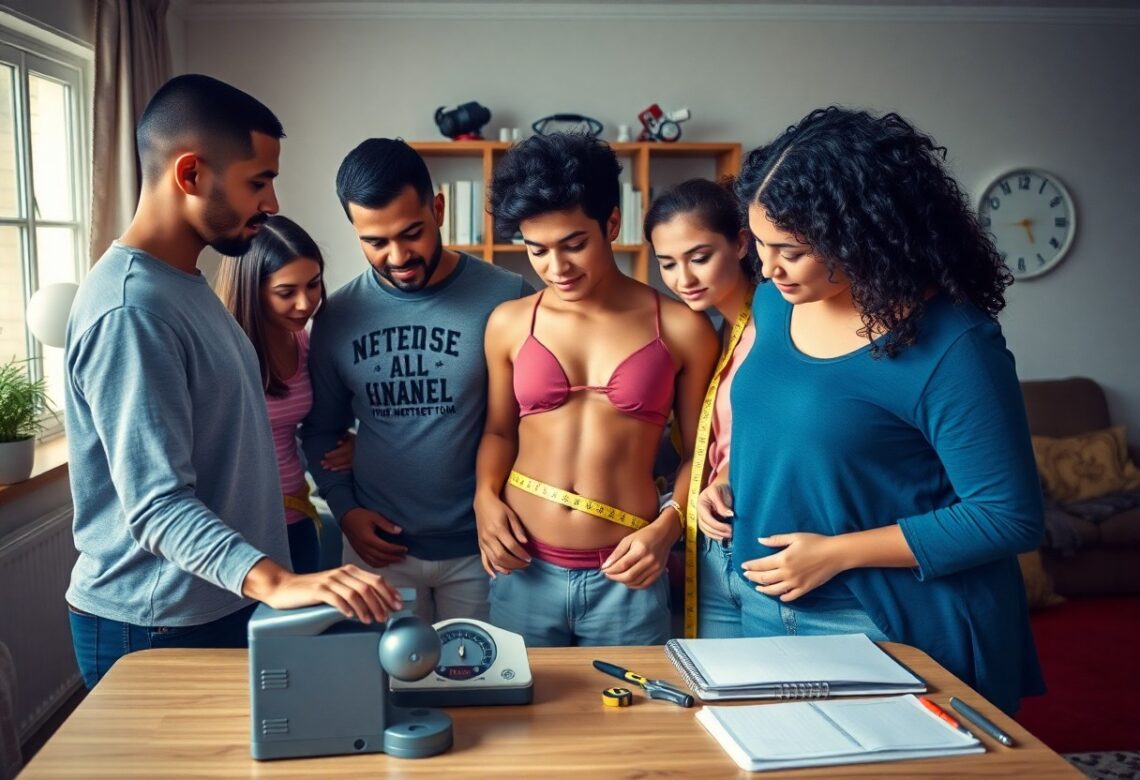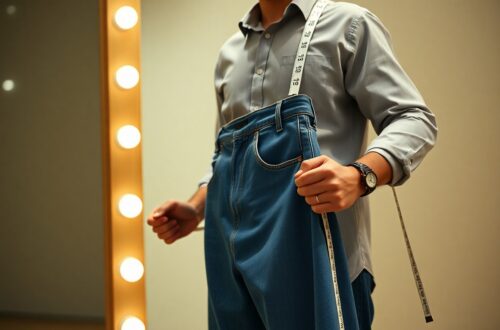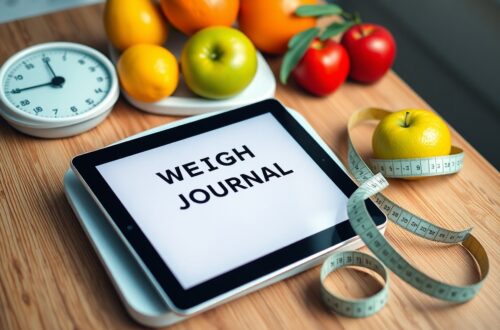Many people find themselves uncertain about how to accurately take body measurements, which can be important for various purposes, from tailoring your clothes to tracking your fitness progress. This complete guide is designed specifically for you, highlighting the necessary tools and step-by-step instructions to help you confidently measure your body. By following this simple yet effective approach, you’ll gain a better understanding of your unique dimensions, empowering you to make informed decisions about your health, fitness, and style choices.
Key Takeaways:
- Understanding Measurements: Familiarize yourself with basic body measurements such as chest, waist, hips, arms, and inseam for accurate tracking.
- Tools Needed: Invest in a flexible measuring tape and a notebook or app for recording measurements to streamline the process.
- Measurement Techniques: Learn how to properly measure to ensure consistency by using the same method each time.
- Frequency of Measurement: Take measurements regularly (e.g., monthly) to monitor changes and progress effectively.
- Body Shape Awareness: Understand different body shapes, as this knowledge can help you tailor your fitness or diet plan.
- Types of Measurements: Learn about various additional measurements such as body fat percentage and muscle mass for a comprehensive understanding of fitness.
- Data Tracking: Keep a log of your measurements to visualize progress, making adjustments to your health regimen as needed.
Types of Body Measurements
A comprehensive understanding of body measurements is necessary for various purposes, such as clothing fitting or health assessments. Here’s a quick overview of the types of measurements you might encounter:
- Standard Measurements
- Specialized Measurements
- Proportional Measurements
- Functional Measurements
- Body Composition Measurements
Assume that you will use these measurements for accurate fittings and assessments in your personal or professional endeavors.
| Standard Measurements | Typically involve basic dimensions like height, weight, bust, waist, and hip circumference. |
| Specialized Measurements | Include more detailed data such as inseam, sleeve length, and other design-specific measurements. |
| Proportional Measurements | Focus on ratios between different body parts for tailored fitting solutions. |
| Functional Measurements | Assess how your body performs during certain tasks or activities. |
| Body Composition Measurements | Evaluate the percentage of fat, muscle, and bone in your body. |
Standard Measurements
If you are starting with body measurements, standard measurements are the fundamental metrics you need to know. They typically include your height, weight, and circumference values of key areas like the bust, waist, and hips. These measurements form the baseline data for tailoring garments or assessing health metrics.
Specialized Measurements
Assuming you want to go beyond the basics, specialized measurements can provide deeper insights tailored to specific needs, such as custom clothing or athletic performance. These often include metrics like inseam lengths, shoulder widths, and arm lengths.
To gain the most from specialized measurements, it’s important to employ precise techniques and tools. You might consider using specific measuring devices, or even seek assistance from professionals who can ensure accuracy. These measurements are particularly useful in fields such as fashion design or sports medicine, as they allow for tailored solutions and enhanced performance through improved fitting and function.
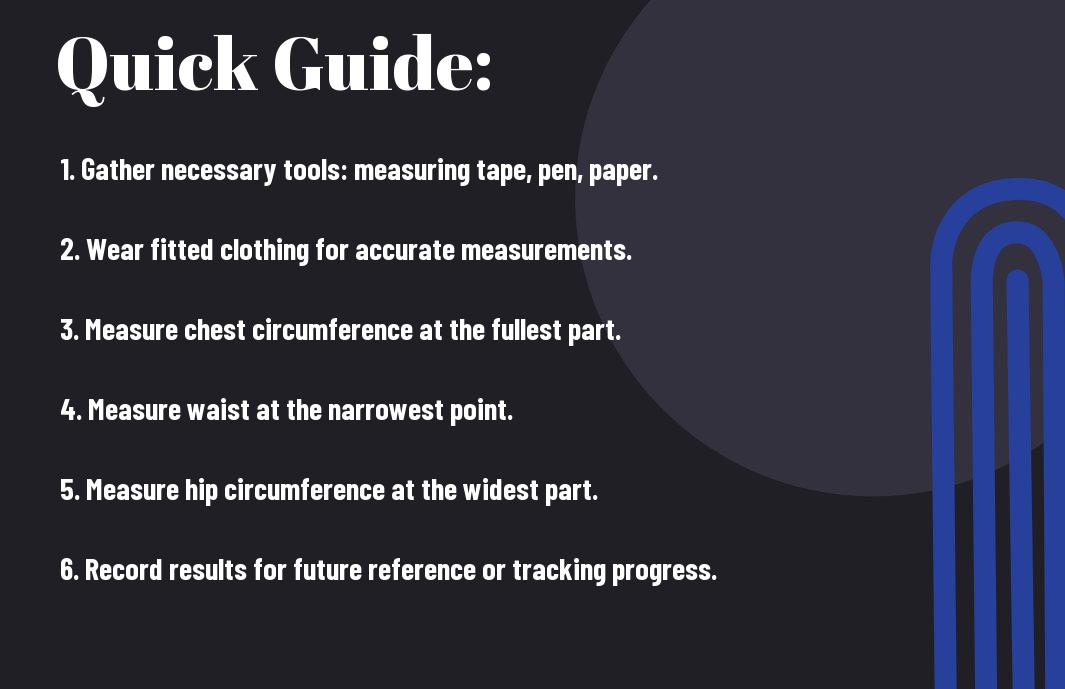
Step-by-Step Guide
One of the best ways to achieve a perfect fit is by taking your body measurements accurately. This guide will walk you through the process step-by-step, ensuring you feel confident in your ability to measure yourself. For detailed information on How to Take Body Measurements for Perfect Fit, follow the tips below:
| Measurement | How to Measure |
|---|---|
| Chest | Wrap the tape measure around the fullest part of your chest. |
| Waist | Measure around the natural waistline. |
| Hips | Measure around the fullest part of your hips. |
Taking Accurate Measurements
An effective measurement process hinges on accuracy. Stand upright and relaxed while measuring, and ensure the tape is snug yet not too tight. Keep the tape parallel to the ground for accurate results. For best results, consider using a mirror to help guide you and ask someone to assist if needed.
Tools Required
Now, gather the crucial tools for measuring your body. You will need a flexible measuring tape, a notebook to record your measurements, and potentially a fabric ruler or straight edge for additional accuracy.
To achieve reliable measurements, use a high-quality, cloth measuring tape, which is both flexible and durable. A flat surface can also help you measure against straight edges more effectively. Keeping a notebook handy will allow you to track your body measurements over time, making it easy for you to confirm any changes in your dimensions. Always ensure your measuring tools are in good condition for precise results.
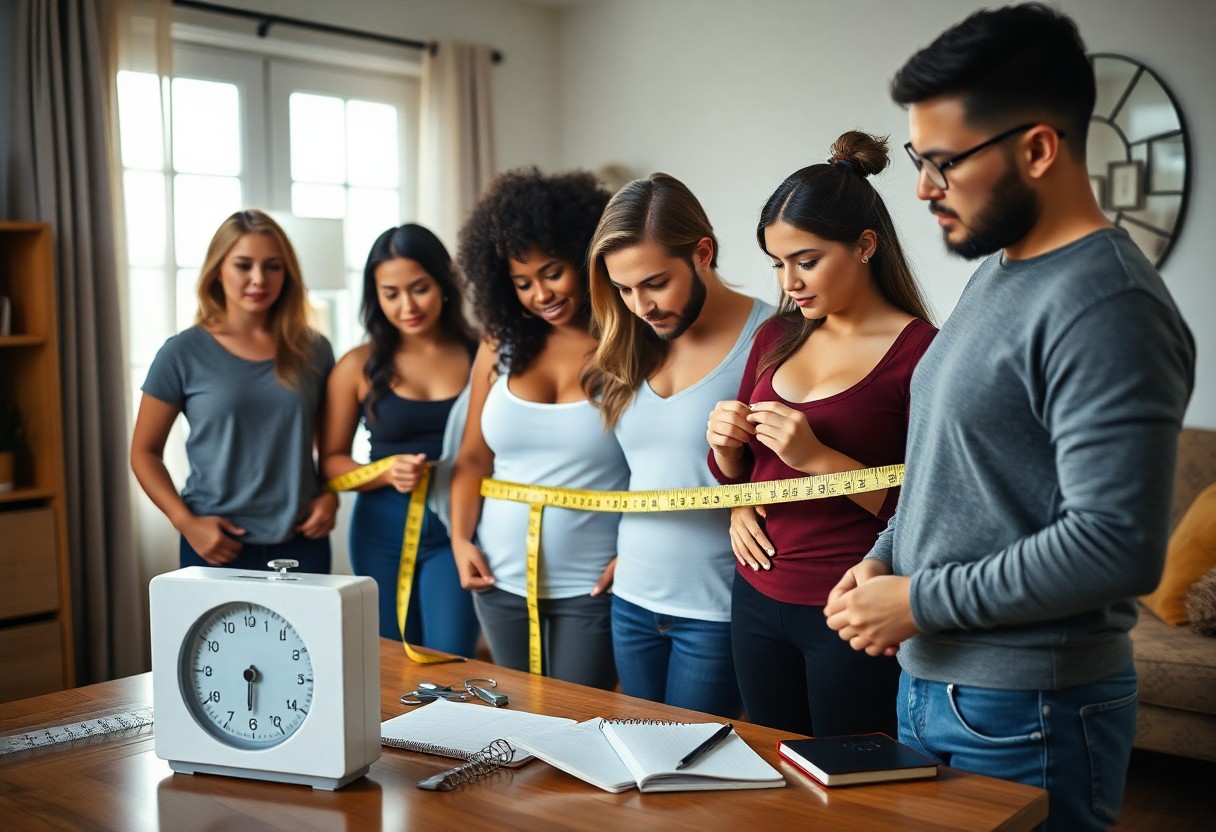
Factors Influencing Body Measurements
Despite the simplicity of body measurements, various factors can significantly influence the results. Understanding these factors is vital for accurate assessments. Your body can show variations based on:
- Age
- Gender
- Genetics
- Activity level
- Diet and nutrition
- Hydration levels
Any effort to obtain precise measurements should account for these elements to ensure they reflect your true body dimensions.
Body Composition
One aspect that greatly affects your body measurements is body composition. This refers to the proportion of fat, muscle, bone, and other tissues in your body. Higher muscle mass typically leads to larger measurements in specific areas, while increased body fat may alter the figures as well. Understanding your body composition helps in setting realistic fitness and health goals.
Posture and Positioning
Posture has a significant impact on your body measurements. Slouching or standing with improper alignment can lead to inaccurate readings, affecting not only your measurements but also your overall appearance. Achieving a balanced, upright posture during measurement will offer a true representation of your body dimensions.
Positioning is equally important; standing straight with your feet parallel and your arms relaxed can ensure that you capture the most accurate measurements. It’s advisable to take measurements at the same time of day, preferably in the morning, when your body is at its natural state. Take note of how you stand or sit during every measurement to make sure your results are consistent and reliable.

Tips for Accurate Measurements
Keep your measurements consistent for the best results. Here are some tips to ensure accuracy:
- Use a flexible measuring tape.
- Measure over fitted clothing or your bare skin.
- Ensure the tape is snug but not tight.
- Take the measurements at the same time each day.
- Have someone assist you for hard-to-reach areas.
Perceiving these details can significantly impact your measurement accuracy. For a comprehensive guide, check out How to Take Body Measurements to Track Progress.
Preparation Techniques
On the day you plan to take your measurements, wear minimal clothing to ensure accuracy. Stand in front of a mirror to help position the tape correctly. Ensure that you are standing upright and relaxed, with your arms relaxed by your sides. Take a deep breath and hold it out slightly to gauge your natural body contours.
Common Mistakes to Avoid
Common errors can lead to inaccurate measurements. Be careful with the following pitfalls:
Understanding your measurement process can help you avoid mistakes like measuring over bulky clothing or pulling the tape too tight. Another frequent issue is taking measurements at different times of the day, which can lead to variances due to natural body fluctuations. Additionally, relying entirely on your memory instead of recording the numbers can hinder your tracking progress. Consistency and attention to detail are key to successful body measurements.
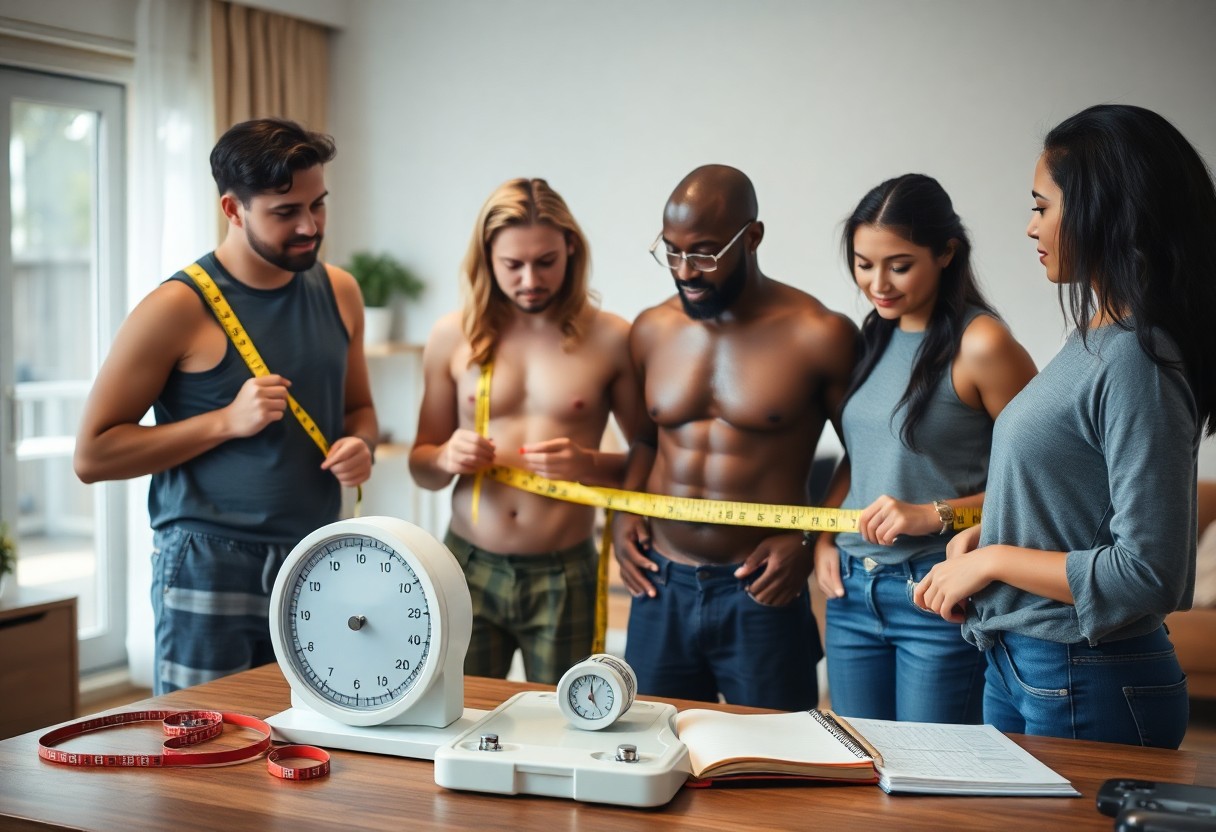
Pros and Cons of Body Measurement Techniques
To effectively choose a body measurement technique, it is important to understand its advantages and disadvantages. Below is a breakdown of the pros and cons:
| Pros | Cons |
|---|---|
| Provides accurate sizing for clothing | Time-consuming process |
| Helps track body changes | Requires specific tools |
| Enhances self-awareness | Potential for human error |
| Indicates fitness progress | May cause body image concerns |
| Facilitates custom fitting | Can be complicated for beginners |
| Offers insight into health metrics | Requires regular updates |
For more insights, check out How to Get Your Accurate Body Measurements for Clothing ….
Benefits of Regular Measurement
Clearly, regularly measuring your body can lead to a deeper understanding of your physique and supportive tracking of changes over time. This practice can assist you in making informed decisions regarding fitness and health, encouraging a more tailored approach to your personal goals.
Potential Drawbacks
Even though measuring your body offers numerous benefits, there are some potential drawbacks to consider. Some individuals may find the process overwhelming or may become fixated on the numbers rather than focusing on overall well-being.
The focus on precise measurements can sometimes lead to frustration, particularly if the numbers do not align with personal expectations or goals. Additionally, beginners may struggle with using the necessary tools effectively, which could result in inaccurate measurements and confusion. It’s vital to maintain a balanced perspective and avoid letting the measurements dictate your self-worth.
Conclusion
Conclusively, understanding how to take complete body measurements is crucial for tailoring your fitness journey, choosing the right apparel, or begining on a DIY sewing project. By following this comprehensive guide, you empower yourself with the knowledge to assess your body accurately, track progress, and achieve your personal goals. Embrace this skill confidently, ensuring that every measurement you take fuels your self-improvement and enhances your overall experience. Your body is unique, and accurate measurements will help you celebrate that individuality.
FAQ
Q: What is the purpose of a complete body measurement guide?
A: The purpose of a complete body measurement guide is to provide individuals with the knowledge and techniques to accurately assess their body measurements. This is important for various reasons, including tailoring clothing, monitoring fitness progress, and understanding body proportions for health and wellness.
Q: What basic tools do I need to take body measurements?
A: To take accurate body measurements, you will need a flexible tape measure, a notepad or digital device for recording measurements, and possibly a mirror for self-checking your technique. Some may also find it useful to have a partner to help with certain measurements for improved accuracy.
Q: How do I measure my waist correctly?
A: To measure your waist correctly, stand straight and locate the narrowest part of your torso, generally just above the belly button. Wrap the tape measure around this area, ensuring it sits comfortably but snugly against your skin without squeezing it. Make sure the tape is parallel to the floor and then read the measurement while relaxing your stomach.
Q: What measurements are typically included in a complete body measurement guide?
A: A complete body measurement guide typically includes waist, hips, chest/bust, inseam, shoulder width, thigh, and arm circumference. Some guides may also include neck, wrist, and calf measurements depending on the intended purpose, such as for sewing or fitness tracking.
Q: How often should I take my measurements?
A: It is generally recommended to take body measurements every 4 to 6 weeks. This frequency allows you to track changes over time, whether you are looking to gain muscle, lose weight, or maintain your current physique. However, you should also consider measuring whenever you start a new program or make significant changes to your routine.
Q: Why is it important to have someone assist with measurements?
A: Having someone assist with measurements can be beneficial for achieving greater accuracy, especially for hard-to-reach areas such as the back or shoulders. An extra set of eyes ensures that the tape measure is positioned correctly and that the measurements are read accurately, reducing the risk of errors that can occur when measuring alone.
Q: Can I use my body measurements for fitness goals?
A: Absolutely! Body measurements are a useful tool for monitoring progress towards fitness goals. By tracking changes in your measurements over time, you can gain insight into whether you are losing fat, gaining muscle, or maintaining your body composition. These measurements provide a more detailed understanding of your progress compared to just focusing on weight alone.
